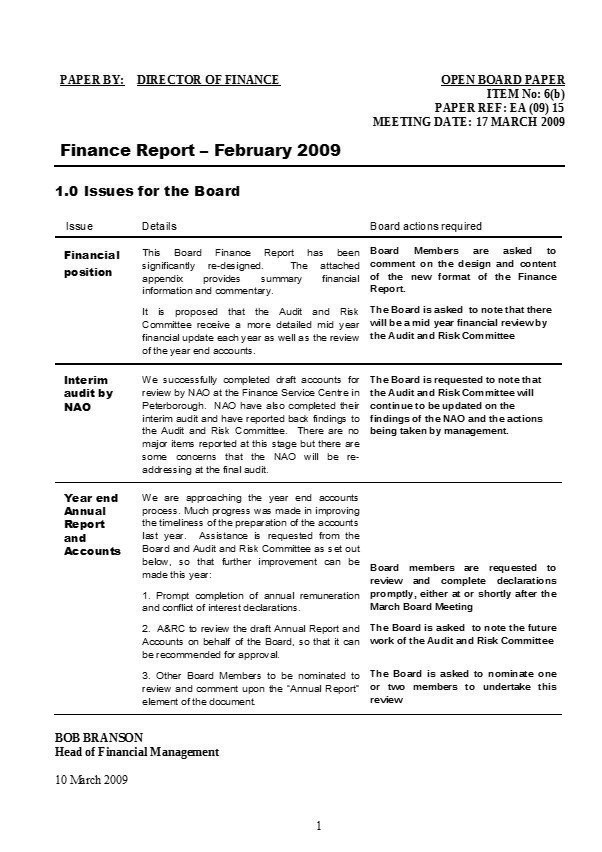“Without a standard there is no logical basis for making a decision or taking action.”
– Joseph M. Juran

Many of the factors that make for success in business, and in life, are seemingly mundane; tedious even, but that apparent blandness can sometimes hide the fact that the routine disciplines are the bedrock of good performance. So the gifted musician practises their scales religiously, the professional athlete works on their flexibility, the talented leader makes sure he/she gets enough sleep so that they have a clear head when making decisions etc. In business one of the most overlooked of these ‘hidden’ success factors is how people formally communicate ideas and information within a business.
Whether reporting overall business performance, ‘pitching ideas’, solving problems, planning a negotiation, or giving project updates, having a systematic approach to transmitting information around the business is an unglamorous but important factor in an organisation’s success. Well-designed standard formats ensure that key points are covered and errors are minimised. It’s easy to learn to write them and the information is easy to grasp (because the format is always the same.) So what are some examples of effective, standardised reporting formats…
The Balanced Scorecard
Developed by Robert S. Kaplan and David P. Norton (1992 Harvard Business Review) the aim of the Balanced Scorecard is to:
- Identify what you need to measure to be successful
- Focus people (and business processes) on the priorities
- Make sure that all people (and systems) are aligned with the same set of priorities
In essence the scorecard aims to add strategic non-financial performance measures to traditional financial metrics, to give managers and executives a more ‘balanced’ view of a company’s performance. The Scorecard has four sections that cover the key elements, which, Kaplin & Norton argue, makes for success in business:
- Financial (e.g. ROI; Cash Flow; Profitability)
- Customer; internal and/or external (e.g. Customer Satisfaction; Customer Retention; acquisition of new clients; brand image)
- Internal Business Processes (e.g. Manage risks; Efficient operations; Continuous Improvement)
- Learning & Growth (e.g. Talent Management; Performance Management; Morale; Training)
Of course to work well it has to be actively used as the centerpiece of a management meeting, and its completion must be absolutely mandatory. As with all management information it needs constant review and amendment of metrics to retain its relevance. However, ‘Scorecards’ are a ‘big idea’ in terms of reporting formats, in fact they were selected by the editors of Harvard Business Review as one of the most influential business ideas of the past 75 years, as they gives senior executives a clear, structured way of executing and monitoring business strategy.
Board Reports or bored by reports?
Board Reports are intended to help company directors drive their organisations forward by answering questions like, “What were the significant events last month/Quarter? Are we on target? What is the financial situation? What significant investments are planned?” Etc. However, very often, senior executives find that the Board Papers they receive are too detailed and too poorly structured to be able to absorb all the data – they can be hundreds of pages long! They also (typically) suffer from ‘metric madness’, with a huge range of KPI’s (Key Performance Indicators) often using different reporting formats.
The challenge then is to dispense with the myriad of KPI’s, colours, tables and lines, and sheer ‘heft’ that constitute many Board Packs and replace them with a simple, well-organised report that tells a story for each key area of the business. Of course providing the proper level of detail, mostly in the appendixes, is important so that Executive and Non Executive Directors have access to data they need to make informed decisions. But providing that data needs to be done in a clear, concise manner that makes it clear (i) what the purpose of each section of the report is and (ii) what decisions the Board are being asked to make.
One writer on this subject, Jon Moon, suggests that his Words in Tables format (WiT) provides a possible answer. WiT is a method of presenting information in table format…as in this example from his website… jmoon.co.uk

Toyota’s A3 Method & Nemawashi
Toyota’s production system is highly regarded and has a number of well-known elements amongst its 13 components or ‘pillars’ e.g. ‘fool proofing’ (Poka-Yoke) Pull System (Kanban) etc. However a vital, though lesser-known ‘pillar’, is their addiction to A3 reports and ‘building a consensus’ (i.e. Nemawashi.)
Toyota insists that managers use a tool called “the A3” (named after the paper size – 11” x 17”) as a method for sharing information, solving problems and approving proposals. All proposals, ideas, problem solving exercises etc. have to be summarised on a single A3 page. The A3 page is divided into several sections, with each being a small square or rectangle, and each section tells part of a ‘story’ that builds to support a given conclusion. The key to success is to realise that there is a need to ‘story board’ the proposal, recommended action etc. and to ensure that the key data is presented clearly, and there is a logical ‘flow’ to what’s being suggested.
Nemawashi typically begins when the person who is promoting a particular proposal talks the stakeholders through the initial draft of the A3 form. Usually they start with the most junior stakeholder and then work their way up the chain of command, modifying their proposal, as necessary, in the light of comments received from key people. In the event of strong resistance, the proposal is either abandoned or completely reworked. The idea is that once a proposal is approved (which may take some time) it is fully understood by all the relevant parties and can be implemented quickly and efficiently.
Summary on a Page (SOAP)
The Procter & Gamble One Page Memo format has been in use by P&G since the 70’s. As the name suggests all internal communications have to be condensed into one page, and follow a fixed, five-part, format.
- The background
Set the context - Introduce your idea
Describe, ideally in one sentence, what you’re proposing - Explain how your idea works
Explain the key elements of the idea - Reinforce the benefits
List the three most important benefits of your proposal/idea - Suggest the next step
State what has to happen to move things forward
This format ensures that ideas are presented succinctly and coherently, because addressing the five steps (should) automatically mean that the important elements of a new idea have been thought through.
Pecha Kucha – the Japanese art of chit chat
The Japanese reporting format of Pecha Kucha (literally ‘chit chat’) is used to keep presentations short and sharp. The discipline is to prepare 20 slides, each of which gets shown for 20 seconds (on auto change) so each presenter has 400 seconds (6 minutes and 40 seconds) to make their point. It is primarily intended to keep people at conferences (internal or external) and networking events (where there are a whole string of talks on the agenda) ‘focused’ and so avoid death by PowerPoint. Here is an example of this 20 x 20 format in action: www.speaker.org/video/pechakucha.html
So what’s next???
Reflect on the nature and quality of the internal written communications that you (a) prepare and (b) receive, and consider if some ‘standardisation’ of formats might be useful.
On-line
Take a look at this short lecture (10 minutes) on how to use the A3 report format
Reading
How to make an IMPACT: Influence, inform and impress with your reports, presentations, business documents, charts and graphs (Financial Times Series) by Jon Moon
Courses
Consider sending your managers on our “Managing the Team” course (which includes discussions of standardising reporting formats)
Coaching
Or maybe a ‘one to one’ executive coaching session would help you to consider the way some aspects of your company’s documentation could be improved e.g. Standardised Sales Pitches, Revised Board Packs etc.
And remember…
